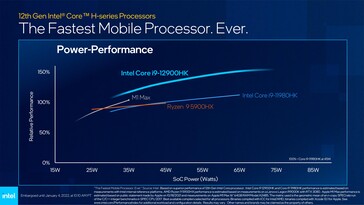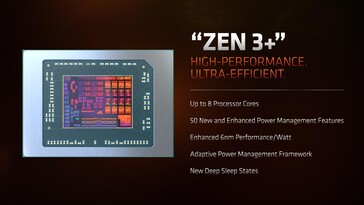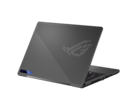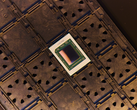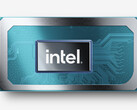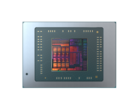AMD Zen 3 Cezanne vs. Intel Tiger Lake-H 45 W power efficiency comparison: Ryzen 9 5900HS and Ryzen 5 5600H trounce the entire Tiger Lake-H lineup
Update 01/14: Added Cinebench R15 performance results following a reader's suggestion.
Though laptops with the latest Intel Alder Lake and AMD Ryzen 6000 processors are expected to be available from later this quarter, a good number of devices are still being offered with Intel Tiger Lake-H and AMD Ryzen 5000 Cezanne chips.
Both Intel and AMD claimed enhanced power efficiency with their respective offerings last year. With Tiger Lake, Intel finally transitioned to 10 nm and also improved on multi-core performance to match that of AMD's. AMD, on the other hand, brought improvements to single-core with Zen 3 while also offering improved power management such as allowing each core to independently regulate its Vcore for a given frequency.
Intel vs AMD: Who has the more power-efficient 45 W chip?
We had reviewed about 73 laptop designs with 45 W CPUs over the past year. Of these 43 were powered by Intel Tiger Lake-H and 30 by AMD Cezanne-H. To test how power-efficient these laptops were overall, we subjected them a variety of tests. You can read about individual CPU power consumptions under various loads in each of the dedicated CPU pages linked below.
For a broad perspective in comparing the power efficiency between Intel and AMD laptops, we considered the Cinebench 15 multi-core test running on an external monitor. This is to ensure that the variations in the internal display specifications do not affect the scores.
The chart below shows Cinebench R15 multi-core scores taken in average across all laptops tested for a given processor. We see that the Core i9-11900H and the Ryzen 9 5900HS are mostly on par with each other and so are the Core i9-11980HK and the Ryzen 9 5900HX. The Ryzen 5 5600H, however, does have a clear advantage over the Core i5-11400H in multi-core workloads.
While the Tiger Lake-H CPUs do seem to have closed the multi-core gap with AMD Cezanne, things change dramatically when power efficiency figures are taken into account. As seen in the chart above, we find that AMD Cezanne Zen 3 processors in general are able to achieve higher performance per Watt compared to corresponding Intel offerings.
At the top-end, we find the Ryzen 9 5900HX to be about 29% more efficient than the Tiger Lake-H flagship, the Core i9-11980HK. The gap further widens with the Core i9-11900H, which lags by 37% compared to both the Ryzen 9 5900HX and the Ryzen 7 5800H.
Even the mid-range hexa-core Tiger Lake-H Core i5-11400H and the quad-core Core i5-11300H fare bad when it comes to overall power efficiency. For instance, we see the Ryzen 9 5900HX to be 32% more power-efficient than the Core i5-11300H despite sporting twice the core and thread counts and higher frequencies.
The Ryzen 5 5600H leads the Core i5-11400H by 34% as well — this is despite the Core i5-11400H operating at a lower 2.7 GHz base clock at 45 W compared to the Ryzen 5 5600H's 3.3 GHz.
You can see individual Cinebench R15 multi power consumption patterns for all the tested laptops in the below graph.
Power Consumption Cinebench R15 Multi (45 W CPUs only)
Zen 3 Cezanne takes the trophy this time, but Alder Lake is right on its heels
Overall, it looks like AMD's investments into improving the power consumption with Zen 3 Cezanne have paid off well. Intel's first tryst with 10 nm has definitely been meritorious, but aspects related to power efficiency seem to have taken a hit. However, things may change this year.
The AMD Ryzen 6000 Zen 3+ chips are based on the TSMC 6 nm process but largely carry forward the architectural improvements we saw with Ryzen 5000. AMD did say that Zen 3+ offers additional sleep states and improved power management leading to up to 24 hours of video playback time on battery, but this remains to be evaluated in real-world testing. Moreover, AMD's presentation did indicate 5 GHz designs at 35 W itself with the Ryzen 9 6980HS and at 45 W+ with the Ryzen 9 6980HX.
Intel Alder Lake, however, is the one to watch out for. With a heterogenous core architecture combined with improvements to OS scheduling in Windows 11, Alder Lake has the advantage of being able to delegate tasks to the E cores or P cores as the case may be in a more efficient manner. The Alder Lake Core i9-12900H and the Core i9-12900HK can offer 14 cores and 20 threads and hit 5 GHz at 45 W as well, so we are looking at higher core/thread counts and higher frequencies at a possibly competitive power consumption.
The above data from the 73 laptop designs we had tested does paint an interesting picture. Of course, there are some limitations to this approach since each laptop chassis and cooling system is unique, which greatly affects performance. Also, performance and power do not always scale linearly till the entire duration of the test.
While we have considered Cinebench R15 Multi as our test of choice, these numbers may also change depending on the load used. For instance, the positioning of the processors may change when idle, lower loads, or even longer sustained loads are considered. Nevertheless, we hope that this comparison can serve to provide a broader perspective as to where Intel and AMD currently stand with respect to power efficiency.
We are yet to get the full low-level architectural details of both Alder Lake-H and Ryzen 6000 that will help us in better understanding power management improvements in this generation. Of course, the higher frequencies also mean higher PL2 values. The power efficiency in multi-core benchmarks will depend on how well the increased PL2 limits are sustained and for how long. A lot also depends on efficient chassis and cooling design by OEMs as well.
Hopefully, we will see better battery run times and a more power-efficient result from Intel this year that further closes the gap with AMD.
Buy the Asus ROG Strix G15 with Ryzen 9 5900HX and RTX 3060 on Amazon


 Deutsch
Deutsch English
English Español
Español Français
Français Italiano
Italiano Nederlands
Nederlands Polski
Polski Português
Português Русский
Русский Türkçe
Türkçe Svenska
Svenska Chinese
Chinese Magyar
Magyar